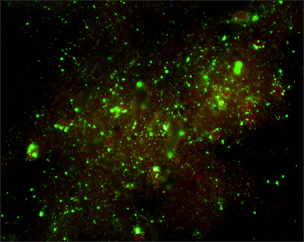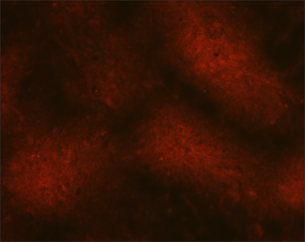Results Reporting and Interpretation
Rabies Testing Home | Rabies in Texas | Submitting Rabies Specimens to DSHS | Requesting Emergency Testing | Results Reporting and Interpretation | Rabies FAQs | Rabies Resources

How to Receive Rabies Results Rapidly
All finalized rabies test reports (positive, non-negative or negative) are available to submitters by fax or through DSHS Laboratory’s Results Web Portal, Lab Online.
Results are available on Lab Online as soon as the test reports are completed. Submitters who are not signed up for fax or Lab Online will receive reports via regular mail.
Receiving Results via the DSHS Results Web Portal
Visit Remote Data Systems | Texas DSHS to start an application to access Lab Online.
- Complete the Facility Security Agreement Form.
- One form only per facility or submitter ID number.
- Complete the Web User Access Agreement Form.
- Each person who needs access must complete a Web User Access Agreement form.
- Shared user accounts are NOT permitted, per HIPAA.
- Submit both forms via email to remotelabsupport@dshs.texas.gov or fax to (512) 776-7533; ATTN: Remote Lab Support.
- Once facility information is verified, a new account is created (allow three business days).
- Once an account is created, the user will receive an email from LabInfo@dshs.texas.gov containing their username and password.
Lab Online login page: https://phlo.dshs.texas.gov
Receiving Results via Fax
Download a Submitter ID Number Request Form from the Laboratory Forms webpage at: http://www.dshs.state.tx.us/lab/mrs_forms.shtm
- Complete sections 1 through 7 with required information.
- Select “Fax” under section 5, Preferred Method of Delivery of Test section of the Submitter ID Number Request Form
- Submit the updated form via email to labinfo@dshs.texas.gov or fax to (512) 776-7533.
Laboratory Reporting staff will contact submitters by phone to report all non-negative test results. If you have questions about the reporting of results, call (512) 776-7578.
Turnaround Times and Reporting of Rabies Results
Routine Testing and Result Reporting of Rabies Specimens (Mon. – Fri.)
- Specimens received between 8:00 a.m. and 3:00 p.m. Monday–Thursday are tested the following morning, and results are available by 12:00 p.m.
- At times when the laboratory is processing a high volume of specimens, there may be a delay in the availability of results until after 12:00 p.m. Should you have questions about results availability, please call the DSHS Rabies Laboratory at (512) 776-7595.
- Please Note: Approximately two percent of specimens appear suspicious on primary testing and cannot be conclusively reported as rabies positive or negative. These specimens must be tested again. Additional testing will delay the reporting of results for these “suspicious” specimens.
- Should you have questions about the availability of test results for a specimen that is being retested, please call the Rabies Laboratory at (512) 776-7595.
Weekend and Holiday Testing and Result Reporting
- Specimens received between 8:00 a.m. and 3:00 p.m. on Friday are tested on Saturday morning. The laboratory anticipates that positive results for any of these specimens will be reported by 12:00 p.m. Saturday.
- Saturday specimen testing is completed Monday morning and final reports are available by 12:00 p.m. Monday. Submitters may request a preliminary report be available on Saturday for a specimen submitted on Friday by contacting the Rabies Laboratory before 4:00 p.m. on Friday at (512) 776-7595.
- Routine specimens received in the Laboratory after 3:00 p.m. on Friday, or received on Saturday or Sunday, are not tested on the weekend but do receive priority status for testing on Monday. These test results are available by 5:00 p.m. Monday.
- Results for specimens received before 8:00 a.m. on “skeleton crew” days are available by 5:00 p.m. same day.
- Specimens received after 8:00 a.m. on such days receive priority status for testing on the next regular business day, with results available by 5:00 p.m. (Skeleton crew days are workdays—usually State holidays—for which reduced staffing is in effect and are not considered regular business days.)
- For emergency testing on major or Federal holidays (except Thanksgiving Day and Christmas Day, when the Laboratory is closed), you must contact the Rabies Laboratory at (512) 776-7595 before the holiday closure to obtain approval and make arrangements for testing.
Results Inquiries
When calling the Rabies Laboratory to check on test results or a specimen status, please have as much of the following information available as possible:
- The name of the party that submitted the animal for testing. (This may be a veterinarian, a veterinary clinic, humane society, or other agency or individual.)
- The city, county, or municipality from which the animal was shipped.
- The type of animal.
- Any identifying number or description that may have been included with the animal.
- The owner’s name (when applicable), and/or the name of the person who made contact with the animal.
- The approximate date the specimen was shipped.
- If inquiring about the receipt of a specimen shipped by courier, please first check and confirm the tracking number and information with the courier before calling the Laboratory.
Having this information available when you call will help us identify the animal/specimen and respond to your questions more quickly.
Results Interpretation
Positive Result
Test results indicate the specimen was positive for rabies virus. Additional information relating to determining the need for rabies prophylaxis should follow the RABIES POSTEXPOSURE PROPHYLAXIS (PEP) FOR HUMANS guidelines found at the DSHS webpage Rabies Treatment in People. More information about rabies prophylaxis is available on the CDC web site.

Positive Result The rabies virus fluoresces when exposed to fluorescein-labeled antibody specific to rabies virus.
Negative Result
Test results indicate the specimen was negative for rabies virus. Post-exposure prophylaxis for rabies is not necessary after exposure to an animal that tested negative for the rabies virus. More information related to rabies testing is available on CDC’s website.

Negative Result No fluorescence is detected after exposure to the fluorescein-labeled antibody specific for rabies virus.
Unsatisfactory Result
Three areas of the brain are tested for the presence of rabies virus: brain stem, cerebellum, and hippocampus. To ensure an adequate amount of tissue is available for testing, the laboratory must receive at least a complete cross section of the brain stem and either the cerebellum or hippocampus. If the minimum required brain parts are not received, Laboratory staff will test what was received.
If that part is positive, the specimen is reported as positive. However, if the part received is not positive, the specimen is reported as unsatisfactory. An unsatisfactory report is necessary since testing fewer brain areas could lead to a false negative, such as failing to detect a weakly rabies-positive animal.
If you receive an unsatisfactory report, you may seek guidance from your regional DSHS Zoonosis Control Office on the use of prophylactic treatment. For information on prophylaxis see the RABIES POSTEXPOSURE PROPHYLAXIS (PEP) FOR HUMANS guidelines found at the DSHS webpage Rabies Treatment in People.
Inconclusive Result
An inconclusive report indicates that when the animal was tested for rabies, some material in the brain of the animal looked suspicious but could not be definitively identified as rabies virus. Prior to issuing an inconclusive report, the specimen is retested multiple times. If you receive an inconclusive report for rabies, you may seek guidance from your Regional DSHS Zoonosis Control Office on the use of prophylactic treatment. For information on prophylaxis please see RABIES POSTEXPOSURE PROPHYLAXIS (PEP) FOR HUMANS guidelines found at the DSHS webpage Rabies Treatment in People
Decomposed or Destroyed Specimen
If a specimen is received in an advanced state of decomposition or is damaged from traumatic injury, Laboratory personnel will do their best to retrieve and test any available/intact brain tissue. If there is no available tissue the specimen will be reported as decomposed or destroyed.